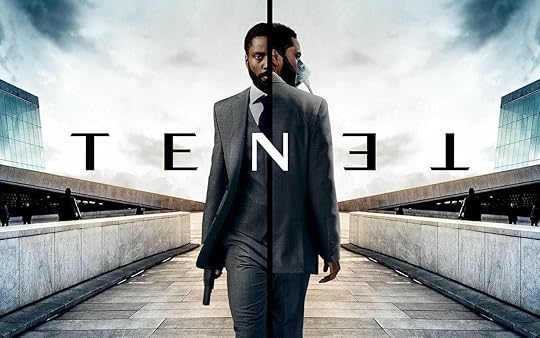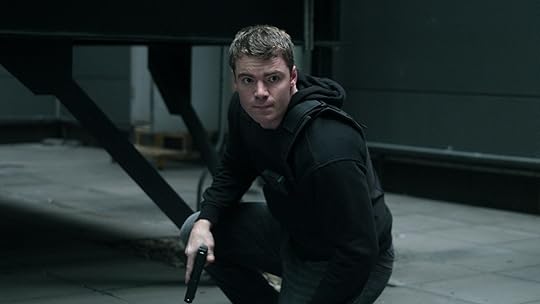How to Write Suspense That Hooks Readers.
This summer, I decided to give myself a BHAG, yep, a Big Hairy Audacious Goal. And not just any BHAG: finishing my novel Crime Cleaners.
The seed for it was planted last year when I dared myself to write a TV pilot. The Universe (in its usual, not-so-subtle way) kept nudging me, whispering, “This idea is too good to stay tucked in a drawer.” So, I thought, why not expand it into a full-blown novel?
Of course, life being life, the manuscript never made it past the “dreaming about it in the shower” stage.
Fast-forward to June: with a little push from my mentor and a lot of coffee-fueled determination, I declared I would finish the book in three months. Three months! For someone who’s never written crime before.
(Yes, I know. What was I thinking?)
Which meant only one thing: a crash course in all things crime, thriller, and tension. Because if suspense is the lifeblood of a good mystery, I needed a transfusion.
And that’s when it hit me. You know that moment when you stay up way past bedtime, telling yourself just one more chapter, only to see the sunrise peeking through your blinds? That’s not an accident.
That’s suspense at work, engineered, brick by brick, by a writer who knows exactly how to twist the knife.
And over the last decade, storytellers have been upping the ante, blending timeless tricks with daring new techniques that keep us flipping pages (or binging episodes) like our lives depend on it.
Here are 7 tension-building techniques that’ll keep your story buzzing like a live wire.
7 Secrets to Take Your Plot from Tame to Tension-Filled.

#1 – The Ticking Clock: Deadlines that Tighten the Screws.
There’s something about a ticking clock that makes us all squirm. Maybe it’s leftover exam anxiety, or the fact that most of us have raced to catch a train with seconds to spare, but the moment you add a deadline to a story, the tension shoots through the roof.
Time pressure doesn’t just speed things up; it makes every decision heavier, every mistake costlier. Characters can’t waffle when the sand in the hourglass is almost gone, they have to act, and usually under the worst possible circumstances.
The beauty of this trick is that it works on both big, explosive scales (the bomb goes off at midnight unless…) and on smaller, intimate ones (the truth has to come out before the wedding starts).
Either way, readers feel that same sweaty-palmed urgency. Our heartbeats start syncing with the countdown, and suddenly we’re racing right alongside the characters, praying they’ll make it, or morbidly curious if they won’t.
Take Before I Go to Sleep, with Nicole Kidman uses a chilling version of the ticking clock.
Christine, the protagonist, suffers from amnesia and wakes up every morning with no memory of her life.
Each day is essentially a reset button. The ticking clock here is brutal: she has only the span of a single day to piece together who she is, what’s happening around her, and who she can trust, before sleep erases it all.
That daily reset builds relentless tension, because every scrap of truth must be uncovered (and acted on) before the clock strikes midnight
 #2 – Suspense Objects: When an Item Carries the Weight of Fear.
#2 – Suspense Objects: When an Item Carries the Weight of Fear.
Sometimes it isn’t a villain lurking in the shadows or a bomb about to go off that ties our stomachs in knots; sometimes it’s an object.
A single, ordinary-looking item that quietly hums with danger because of what it represents. Think about it: a lipstick-stained glass, a bloodied shoe, a locked box no one dares to open.
These objects aren’t just props; they’re narrative landmines.
Why do they work so well? Because objects are deceptively static.
They just sit there, until suddenly, they don’t. The suspense isn’t only in the thing itself, but in the audience’s anticipation: who’s going to find it, when will it resurface, and what chaos will it unleash when it does?
That tension can simmer for pages or scenes, making the reveal all the more explosive.
Take Tenet, Christopher Nolan’s time-bending thriller. On the surface, the “inverted bullet” is nothing more than a hunk of lead. But when the Protagonist discovers bullets moving backwards through time, that object flips the rules of the entire story.
Suddenly, every stray bullet casing is loaded with dread, proof of a hidden war where cause and effect no longer apply. The audience leans in, waiting to see what the next encounter with one will mean: is it evidence, a warning, or the start of something catastrophic?
That’s the beauty of suspense objects: they may be silent, but they scream potential disaster.

#3 – False Victories: Relief That Turns Sour.
There’s nothing juicier than watching characters and audiences believe they’ve triumphed, only to realise the story has sucker-punched them.
False victories deliver that gut-dropping whiplash: the relief evaporates, dread floods in, and suddenly the characters are worse off than before. Suspense thrives on these cruel reversals.
Writers love false victories because they toy with emotional rhythm.
A narrative can’t be all tension, all the time; we’d flatline. But letting readers exhale, only to pull the rug out, amplifies the next wave of panic tenfold. It’s the storytelling equivalent of “the call is coming from inside the house.”
Take The Night Agent. Peter believes he’s finally uncovered a trustworthy ally or solved a crucial piece of the conspiracy, and for a moment, we breathe alongside him. But almost instantly, betrayal slams the door shut. The person he trusted is compromised, or the apparent breakthrough leads straight into another trap.
Those false victories don’t just raise tension; they make us paranoid, scanning every new development with suspicion

#4 – Multi-Perspective Suspense: Seeing Danger From All Sides.
One of the sharpest tools in a suspense writer’s kit is letting the audience peek behind multiple curtains.
When we follow more than one perspective, the story transforms into a dramatic irony playground. We know Character A is about to walk into Character B’s trap, and the dread is exquisite.
This technique is effective because it engages the reader as an active participant. Instead of passively waiting for reveals, we’re actively calculating the collision course. The tension doesn’t just live in what’s hidden; it thrives in the unbearable wait for two (or more) storylines to smash together.
Think of Big Little Lies. The story unfolds through multiple women’s perspectives, each adding new layers of secrecy, pain, and motive. We, the audience, are ahead of some characters but behind on others, always juggling truths and half-truths. By the time the infamous school fundraiser night arrives, the suspense is unbearable, not because of a single secret, but because we’ve been living in multiple conflicting truths, just waiting for the explosion.

#5 – Cliffhangers with a Twist: The Art of the Cruel Cut.
Cliffhangers are the bread and butter of suspense, but the best storytellers don’t just slam the brakes mid-action…they add a twist of the knife.
A truly effective cliffhanger doesn’t merely delay resolution; it changes the question. Instead of “Will they survive?” it becomes “Wait… what just happened?”
Audiences adore (and hate) this because it creates double suspense: first, the immediate situation, then the brain itch of the new uncertainty. It’s why binge-watching exists. Who can stop when you’ve been served a revelation with no follow-up?
Case in point: Severance. The finale drops one of the most gasp-worthy cliffhangers of recent years: just as characters in the “innie” world manage to awaken in their “outie” lives and start unravelling their reality, the screen cuts to black. We don’t just wonder if they’ll succeed, we’re floored by the implications of what we’ve glimpsed. It’s suspense squared, the kind that keeps fans dissecting episodes for months.
 #6 – Unconventional Structures: Breaking Time to Build Tension.
#6 – Unconventional Structures: Breaking Time to Build Tension.
Sometimes suspense isn’t about what happens but how it’s told. Messing with structure, fractured timelines, looping narratives, and nested stories can leave audiences off-balance in the best way.
When we’re unsure of where we stand in time or truth, the act of piecing the story together becomes its own source of tension.
The magic of unconventional structures lies in their ability to mirror uncertainty. If a character is lost, traumatised, or desperately trying to make sense of the world, the form of the story itself can pull us into that experience. The suspense isn’t just in the plot; it’s baked into the storytelling fabric.
Take Station Eleven. Instead of a linear pandemic narrative, the series splinters across decades, weaving between pre-collapse life and the fragile communities built after. That non-linear approach forces viewers to hold fragmented knowledge, anticipating how different timelines will intersect. The suspense lives not only in survival, but in the haunting gaps between what we know and what hasn’t yet been revealed.

#7 – Wild Cards: The Character Who Blows It All Up.
If suspense thrives on uncertainty, then nothing is more deliciously destabilising than a wild card character.
These are the unpredictable players, the loose cannons, the tricksters, the ones whose motives are murky at best. With them in the mix, every scene hums with the question: “What will they do next?”
Wild cards keep tension alive because they prevent the narrative from becoming too neat. Just when you think you’ve mapped the trajectory, they zig where everyone else zags. Sometimes they’re allies, sometimes enemies, and often both within the same story beat.
Think of Villanelle in Killing Eve. As a brilliant but unhinged assassin, she transforms every encounter into a suspense bomb. Will she kill, seduce, vanish, or do something utterly bizarre? Her presence alone destabilises the narrative, ensuring that even the quietest moments hum with dread and anticipation.
Final Thoughts.Suspense isn’t about cheap jump scares or dangling readers over the edge of a cliff just for the thrill of it.
It’s about trust, the delicious pact between writer and audience that says, “I’m going to make you sweat, but I promise it will be worth it.”
Whether it’s a countdown clock, a haunting object, a false victory, or a wild card you didn’t see coming, these techniques all serve the same purpose: to keep the pages turning and the audience perched on the very edge of their seat.
And here’s the magic: suspense isn’t just for crime novels or high-octane thrillers. Romance, fantasy, literary fiction, even comedy, all of them can hum with tension if you know how to twist the screws just right. Suspense is less about genre, more about rhythm: stretching, tightening, and then releasing, like a storyteller’s heartbeat syncing with the reader’s.
Now it’s YOUR turn – What’s the most suspenseful story you’ve read or watched lately?
Would love to get your input in the comment box below.
The post How to Write Suspense That Hooks Readers. appeared first on Vered Neta.



